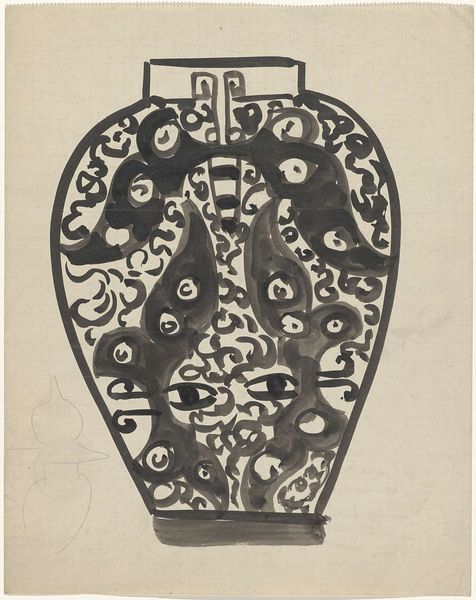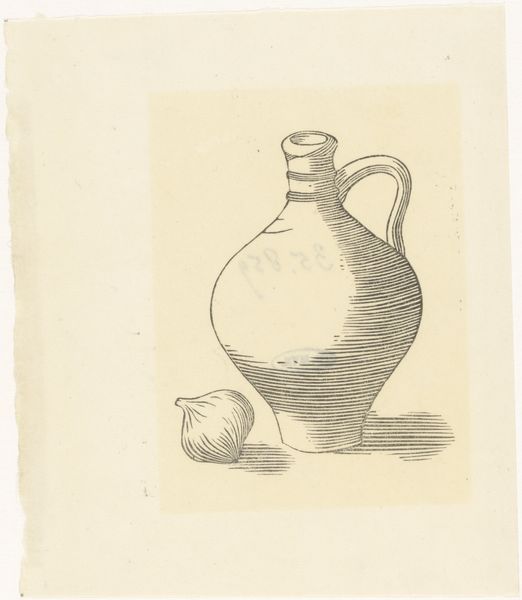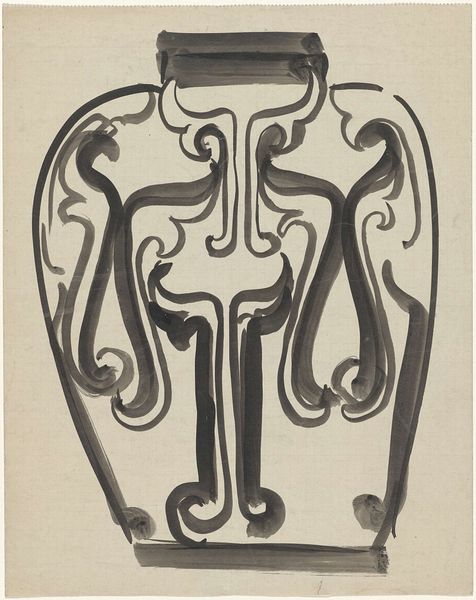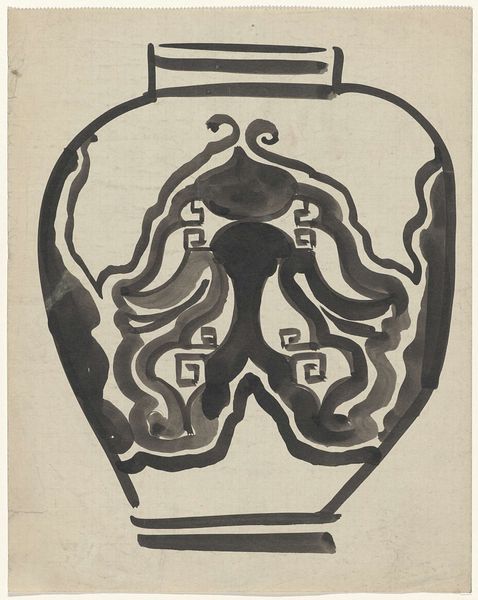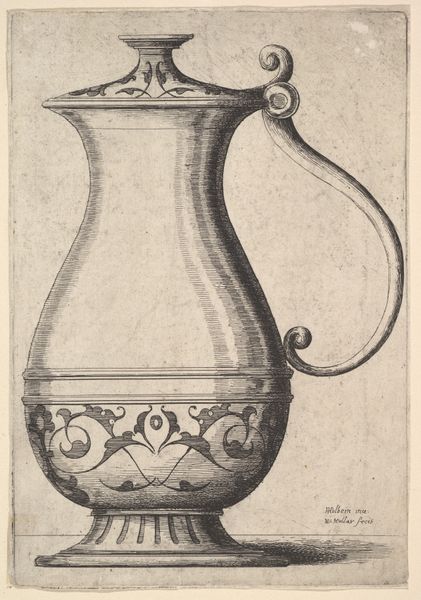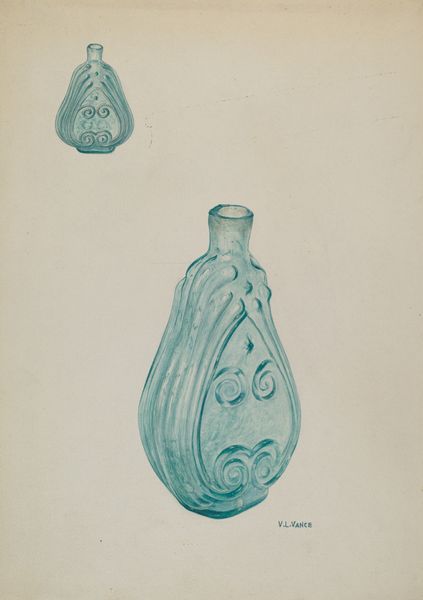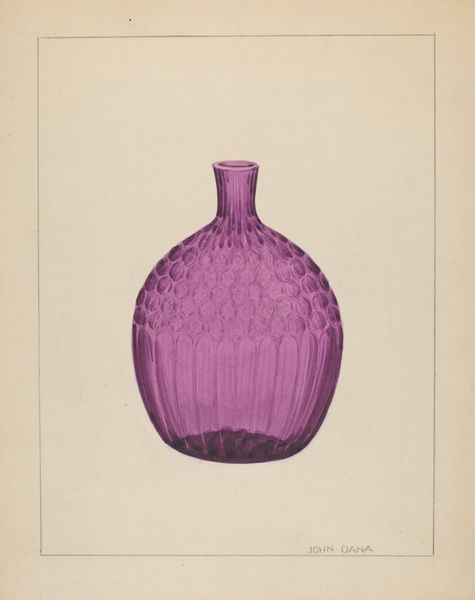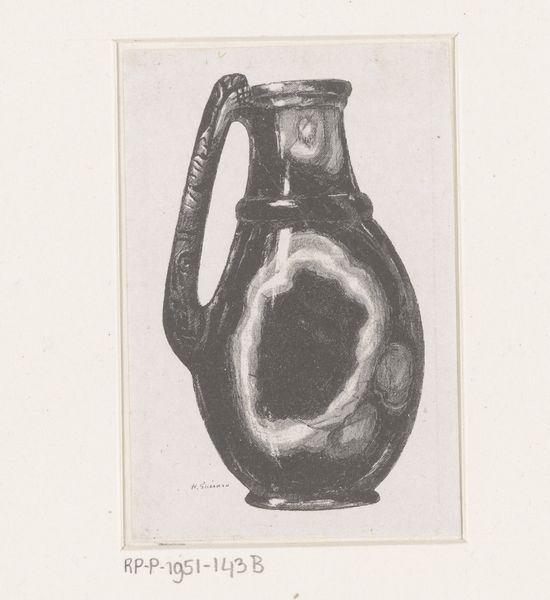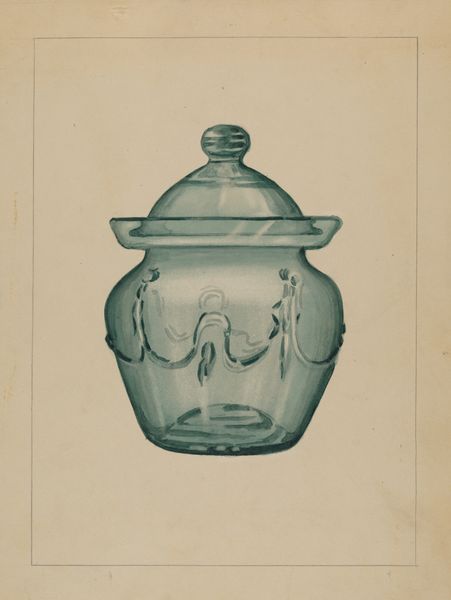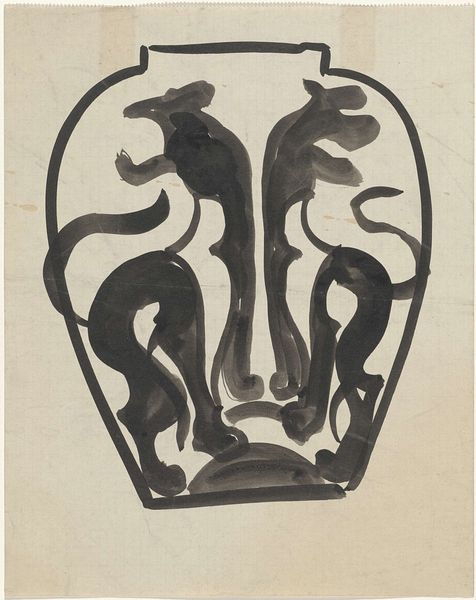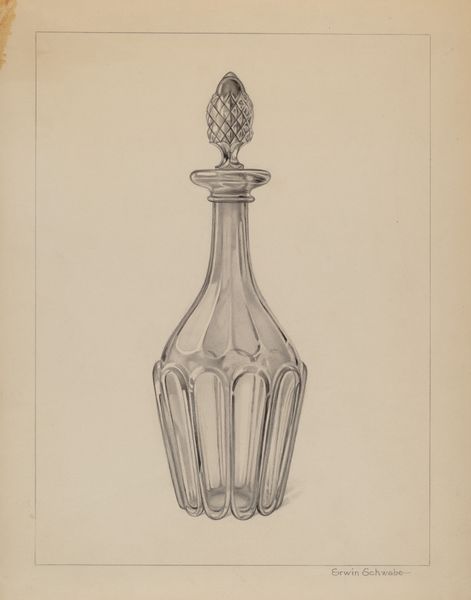
drawing, ink
#
drawing
#
art-nouveau
#
vase
#
form
#
ink
#
geometric
#
pen-ink sketch
#
line
#
decorative-art
Dimensions: height 277 mm, width 220 mm
Copyright: Rijks Museum: Open Domain
Curator: Here we have Carel Adolph Lion Cachet's "Ontwerp voor een vaas," a vase design dating from between 1874 and 1945. It’s ink on paper, a striking example of the Art Nouveau movement housed here at the Rijksmuseum. Editor: My first impression is of stylized, almost aggressively simplified beauty. The black ink on the white paper is so bold, but the overall feel is strangely elegant. Curator: It's fascinating how Art Nouveau embraced both the machine age and the natural world. Note the almost industrial-looking symmetry paired with the organic floral motifs on either side of the vase. Editor: The vase form itself feels ancient, almost like an amphora. The dark, fluid strokes evoke movement but also containment. Do you see any symbolism in those central vertical shapes? They're so evocative yet abstract. Curator: Indeed. The piece exists within a historical tension between progress and tradition, utility, and aesthetics. These weren’t merely designs; they represented a desire to elevate the decorative arts to the level of 'high' art, a deliberate challenge to established artistic hierarchies of the time. Editor: And the bold black and white choice amplifies that message. There’s an immediacy. A call to attention, isn't there? It is more than simply a design, it’s a visual declaration. I see roots connecting deeply into ancient art but aiming for the modern era with those sleek shapes. The dark shapes within can represent both flourishing life and contained potential, what do you think? Curator: Absolutely! And looking through that socio-economic lens, it reveals a society grappling with its own identity during a period of intense industrialization. It reminds us that art doesn’t exist in a vacuum but reflects our values. Editor: Considering the symbolism of vessels—holders of life, spirit, memories, seeing how he has worked with shadow, how it dances, really opens up how artists think about this vessel form beyond functionality. Curator: Looking at this again it is a simple sketch, but seeing its symbolic, historical meaning, it becomes clear, it really isn't about just a simple form, is it? Editor: Not at all, It’s a visual poem to history, progress, memory, and modern life.
Comments
No comments
Be the first to comment and join the conversation on the ultimate creative platform.


